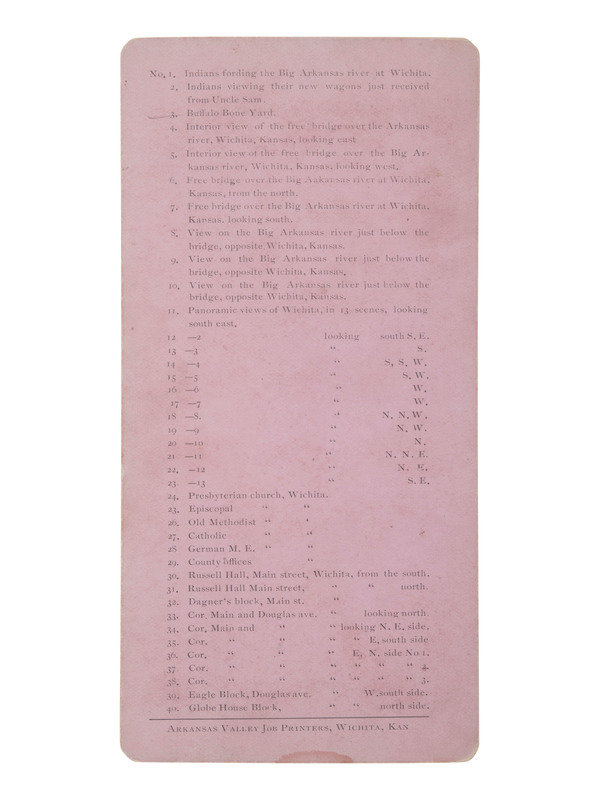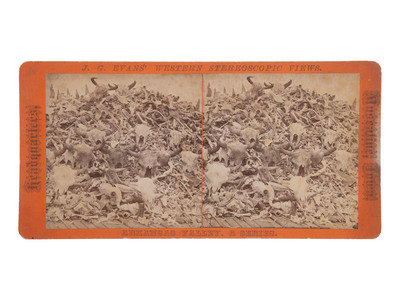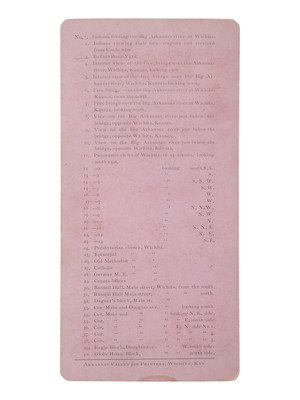Wichita, KS: Arkansas Valley Job Printers, n.d. 6 x 3 in. stereoview on cardstock mount (toning, some soiling to print; edge and corner wear to mount including some staining to right edge). From J.G. Evans' "Arkansas Valley" series, "Headquarters Muscatine, Iowa," as indicated on mount recto. Printed title on mount verso.
At the time of European contact, American buffalo or bison herds were estimated to be as large as 60 million animals (with some estimates into the billions). It is almost difficult to believe the species nearly became extinct in the last century. In an attempt to push Native Americans off their native lands, local officers organized buffalo hunts to diminish the population of the animal vital to the survival of tribes. Hunters, such as "Buffalo Bill" in his youth, would shoot the animals from the roofs of trains to feed railroad crews and to ship hides, some meat back to Eastern markets. The bones were then gathered to be shipped back for buttons and ground up for fertilizer. Buffalo numbers dropped from 60 million around 1800 to an estimated 541 in 1889, and some think as low as 300 in 1900. Fortunately, a number of ranchers saw what was happening and began rescuing the survivors. Today, they have recovered remarkably well. So much so that they are now raised for meat, even though the species has really never been domesticated.



